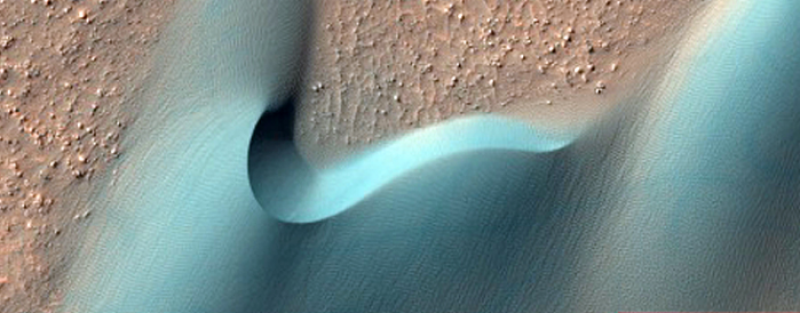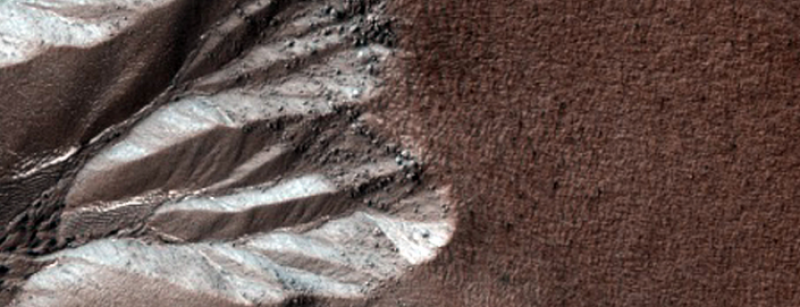 |
| HiRISE image of dunes within Arkhandelsky Crater. NASA/JPL/UofAriz |
It has now been nearly a decade since the HiRISE camera arrived in orbit around Mars and began taking high-resolution images of the Red Planet. Tucked aboard the Mars Reconnaissance Orbiter, HiRISE has a telescope aperture of 0.5 meter, making it the most powerful camera ever sent into deep space, with a maximum resolution of about 0.3 meter/pixel. This has allowed NASA to spy on its Curiosity and Opportunity rovers from space.
The camera was sent to Mars to help scientists identify regions of the Red Planet that would be good candidates for sample return missions (which NASA hopes to fly sometime in the 2020s), as well as possible landing sites for humans on Mars (no earlier than the late 2030s, for NASA). The instrument has also allowed scientists to characterize the surface of Mars and better understand its evolution over billions of years.
As the 62.4-kg camera comes up on its 10th anniversary around Mars, the team of HiRISE scientists just released 1,000 new images showing a variety of Martian features, such as dunes, gullies, craters, polar regions and more.
 |
| HiRISE image showing gully monitoring. NASA/JPL/UofAriz |
Slide show and more at Eric Berger’s blog on ArsTechnica.